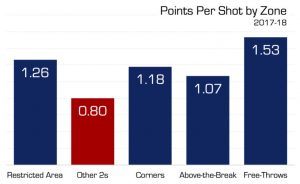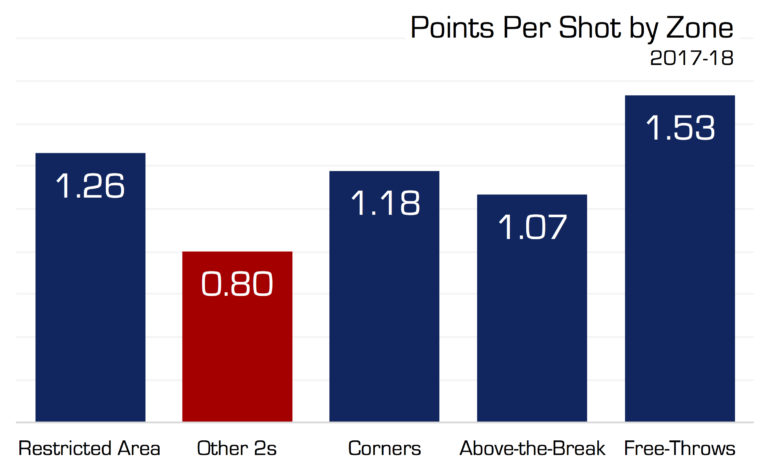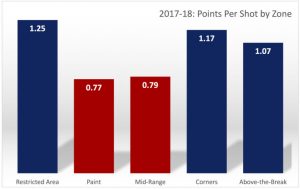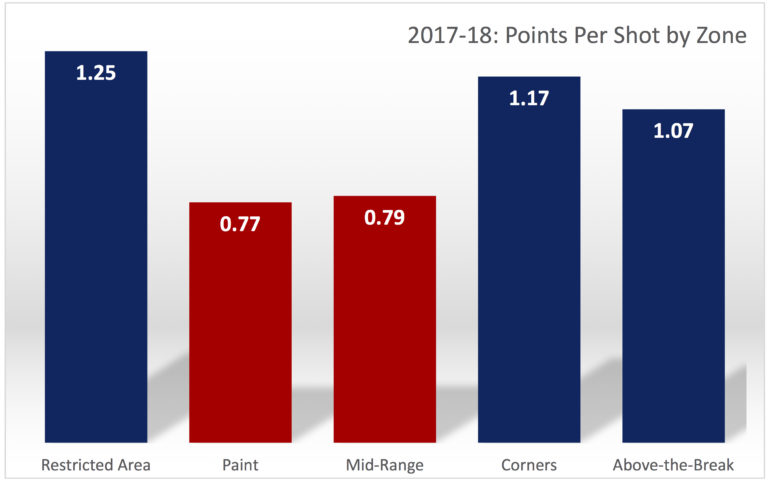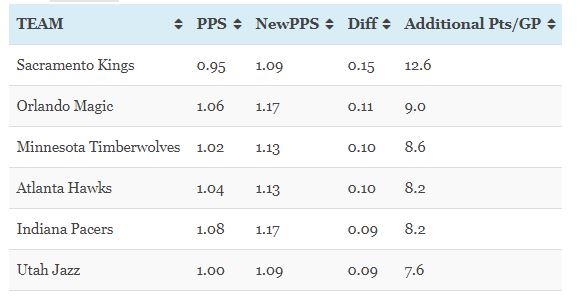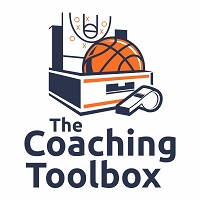This article is republished with permission. It was written by DoSicko and originally appeared on HoopCoach.org.
Football coaches have long analyzed their team’s offensive and defensive efficiencies inside the red zones. The thinking is simple, “We got inside the 20; we better damn well score.” Teams have special red zone plays and red zone practice time. And well they should; the effort to move the ball there and the relatively low number of possessions makes it incumbent on teams to come away with points once the ball is that deep in enemy territory.
Speaking of possessions, one of the inherent difficulties of coaching basketball is getting players to understand the value of a possession. The high number of possessions in a basketball game at any level lends itself to thinking like this, “Big deal, we’ve got a zillion more possessions in this game; who cares if we turned it over or took a bad shot?” This lack of understanding is not restricted to young players but is certainly more prevalent among lesser experienced players. I remember asking players at camps how many possessions there were in a game. Of course, the number depends on the playing tempo of both teams. But many campers didn’t even have a clue. Getting these players to first realize that possessions are finite is a start.
With that said, any device one can use to break the game down into smaller pieces for teaching purposes is extremely valuable. One such breakdown is an analysis of how one’s team performs in basketball’s “red zone”.
It shouldn’t be difficult to designate a basketball red zone. For me, it would clearly start with the key and most likely include the low blocks and the high post. One could add the elbows and the mid-post areas, if one so chooses. No matter. It’s your analysis, so you make the call.
Before we get ahead of ourselves, it’s probably wise to dispel the importance of the concept of “points in paint”. For years, this stat has been quoted like it’s totally conclusive. Nothing could be farther from the truth. It merely indicates the number of points scored on field goals in the paint and ignores several other important types of points scored in addition to just field goals:
- It does not include free throws scored directly on shooting fouls in the paint or at the low block. For example, over the course of a game, if Team A makes 9 FT’s on shooting fouls “in the paint”, those points need to be added to the “points in the paint” tally.
- It does not account for the FT’s made after the one-and-one kicks in-that were directly the result of a foul made before the bonus because of offensive penetration in the paint off the bounce or by pass. For example, let’s say that 3 non-shooting fouls were committed because the ball entered the “red-zone” before the one-and-one kicked in and that the bonus kicked in at 7 fouls. Theoretically, every “points in the paint” FT scored after the bonus is 3/7 or 42.9% attributable to fouls in the paint before the bonus. If 12 FT’s were made after the bonus, then 12 X 42.9% is 5 points that needs to be added to the “points in the paint” tally.
So, let’s say that a game stat sheet said Team A scored 24 points in the paint. If one adds the 9 FT’s scored on “in the paint shooting fouls” and the 5 FT’s scored on one and one FT’s scored after the bonus kicked in, the ACTUAL points in the point tally is 38 points (24+9+5).
Now, let’s go back to “red zone” analysis. To accurately analyze red-zone efficiency, one must also add 2 and 3 point FG’s that were scored as a result of getting the ball into the “red zone”, as the defense adjusted to the penetration and the offense kicked the ball back out to the perimeter for a shot. Let’s say that Team A makes 4- 2 point FG’s (8 points) and 5-3 point FG’s (15 points) attributable to red zone penetration, the total number of “red zone” points for Team A is 61 (24+9+5+8+15).
It’s obvious that the points in the paint total of 24 points on the stat sheet and the 61 “red zone” points tell two completely different stories and that “red zone” points is a far more telling stat than “points in the paint”.
To analyze “red zone” efficiency then, one needs to compute “red zone” penetrations and divide the points by penetrations. (perhaps in our hypothetical example 61 points divided by 47 penetrations or 1.290. Obviously, this number, in of itself, only tells us something when compared to other games. But the biggest advantage is that it helps coaches first understand patterns of success and failure. The bottom line is that the coach is constantly assessing these two questions, “How and why did we score when we get the ball in red zone and how and why didn’t we score?” But, perhaps just as important as the success/failure ratio of red zone efficiency is just the simple concept of getting the ball there. If players are totally cognizant of the importance of getting the ball there, their notion of the importance of each possession will also improve.
Then too, one can assess defensive “red zone” efficiency and the questions become, “How and why did we stop our opponent from scoring or how and why did our opponents score when they get the ball into the red zone. The simple concept of preventing opponents from getting the ball in the red zone will also serve to help players realize the importance of each defensive possession.

